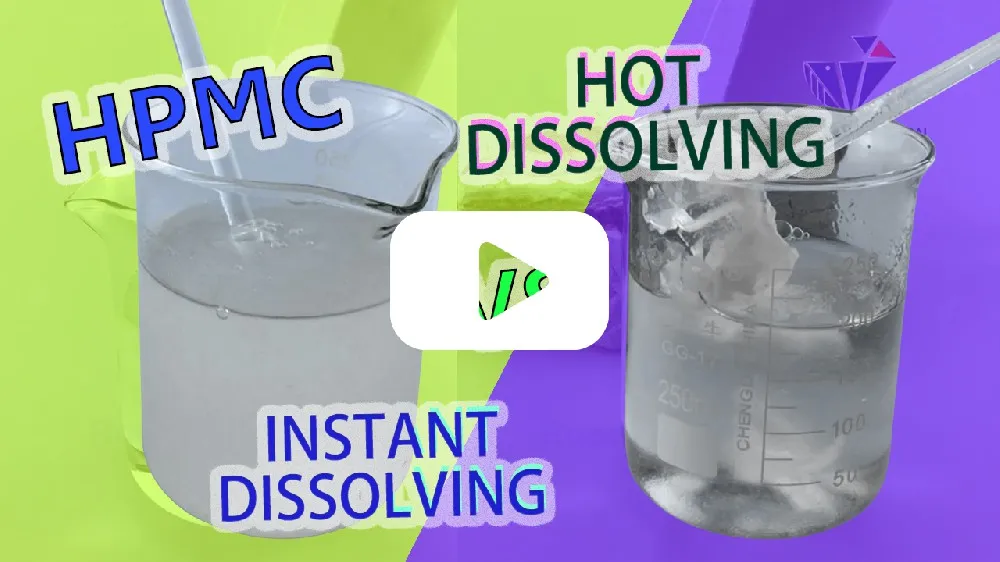
Aug . 21, 2024 18:23 Back to list
Is HPMC Soluble in Water and Its Applications in Various Industries
Is HPMC Water Soluble?
Hydroxypropyl Methylcellulose (HPMC) is a semi-synthetic polymer derived from cellulose, a natural polymer that serves as the primary structural component of plant cell walls. HPMC is widely used in various industries, including pharmaceuticals, food, construction, and cosmetics, due to its unique properties. One of the key questions surrounding HPMC is whether it is water soluble, a characteristic that significantly enhances its versatility in different applications.
Structure and Properties of HPMC
HPMC is created by chemically modifying cellulose through the addition of hydroxypropyl and methyl groups. This modification results in a compound that retains the polymeric backbone of cellulose while gaining improved solubility in water and other solvents. The degree of substitution—how many hydroxyl groups are replaced with hydroxypropyl and methyl groups—determines the viscosity, solubility, and overall functionality of HPMC.
HPMC is known for its ability to form a gel and its thickening properties. These features make it an ideal ingredient in various products, particularly those requiring viscosity and stability. HPMC can dissolve in cold water, forming a transparent solution that is relatively stable, which sets it apart from many other cellulose derivatives.
HPMC in Pharmaceuticals
In the pharmaceutical industry, HPMC serves multiple purposes. It is commonly used as a binder in tablet formulations, helping to ensure that the active ingredients and excipients are held together effectively. Its water-soluble nature means that it can also aid in the controlled release of drugs, allowing medications to dissolve gradually in the gastrointestinal tract.
is hpmc water soluble

Moreover, HPMC is utilized as a coating agent for tablets and capsules. The water-soluble film formed by HPMC provides a protective barrier that can enhance the stability of the drug inside while also allowing for easy swallowing. This functionality is particularly important for patients with difficulty swallowing solid medications.
HPMC in Food Industry
In the food industry, HPMC is recognized as a food additive (E464) and is used primarily as a thickener, emulsifier, and stabilizer. Its water solubility plays a crucial role in product formulation, ensuring that it integrates smoothly with other ingredients without clumping. HPMC can be found in various products, ranging from sauces and dressings to plant-based foods and dairy alternatives, where it helps maintain texture and mouthfeel.
HPMC in Construction
HPMC also finds extensive application in the construction sector. It is commonly used in cement-based products such as tile adhesives, plaster, and mortars. The addition of HPMC improves the workability of these materials, allowing for easier application and spreadability. The water solubility of HPMC ensures that it can be easily incorporated into cement mixtures, where it aids in retaining moisture, thereby enhancing the curing process and the final strength of the product.
Conclusion
In summary, Hydroxypropyl Methylcellulose (HPMC) is indeed water soluble, which greatly enhances its functionality across various industries. Its unique properties—such as viscosity, gel-forming ability, and stability—combine to make HPMC a valuable ingredient in pharmaceuticals, food, and construction. As the demand for versatile and effective additives continues to grow, HPMC's water solubility will undoubtedly play a pivotal role in its ongoing applications and innovations.
-
Versatile Hpmc Uses in Different Industries
NewsJun.19,2025
-
Redispersible Powder's Role in Enhancing Durability of Construction Products
NewsJun.19,2025
-
Hydroxyethyl Cellulose Applications Driving Green Industrial Processes
NewsJun.19,2025
-
Exploring Different Redispersible Polymer Powder
NewsJun.19,2025
-
Choosing the Right Mortar Bonding Agent
NewsJun.19,2025
-
Applications and Significance of China Hpmc in Modern Industries
NewsJun.19,2025







